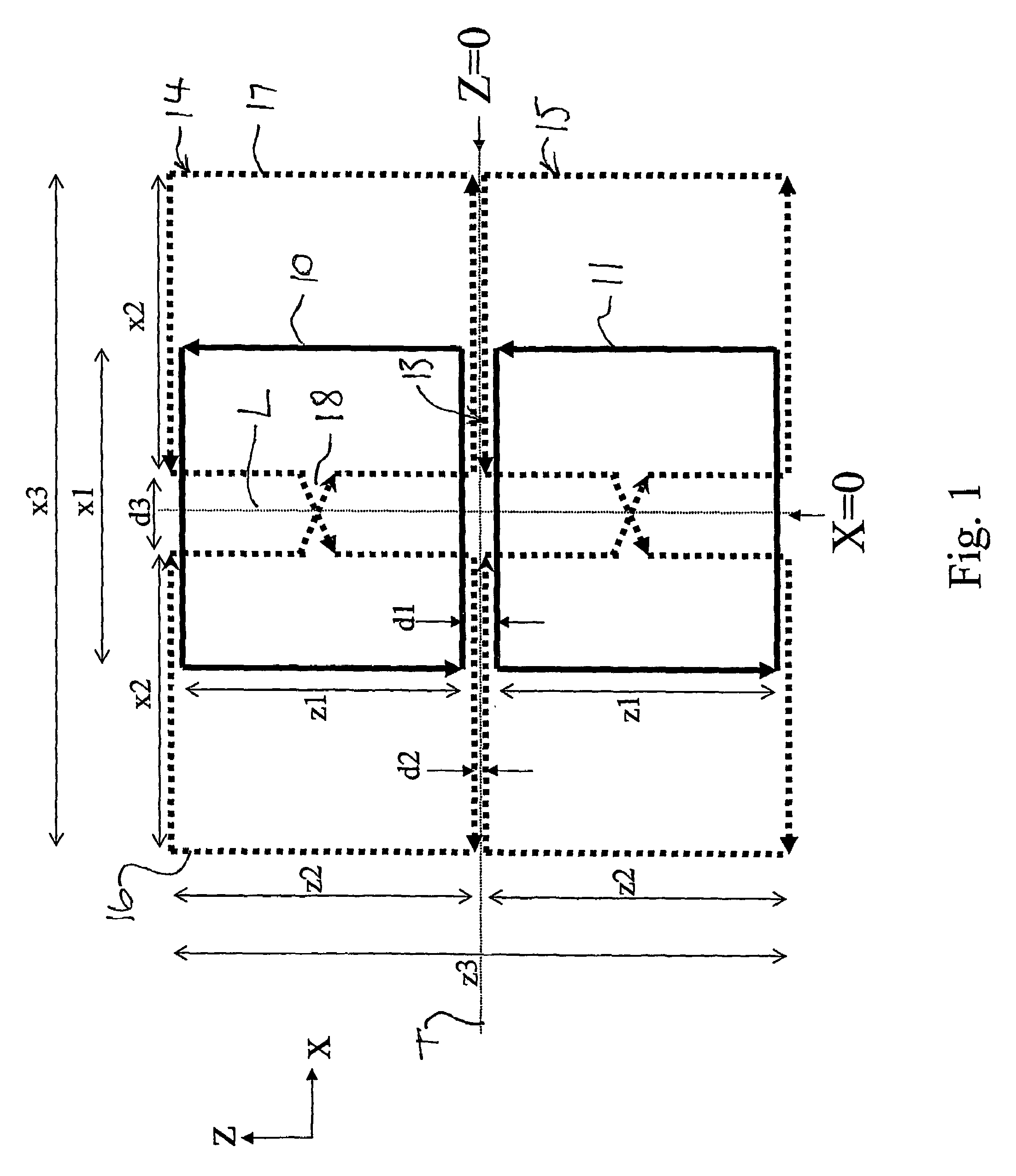Stacked coil array for magnetic resonance experiments
a magnetic resonance experiment and coil array technology, applied in the field of surface or volume array coil design for magnetic resonance imaging, can solve the problem of reducing the ability to unwrap under-encoded images collected using parallel imaging methods, and achieve the effect of improving g-factor and improving homogeneity and snr
- Summary
- Abstract
- Description
- Claims
- Application Information
AI Technical Summary
Benefits of technology
Problems solved by technology
Method used
Image
Examples
third embodiment
[0064]loops 10 and 11 can be used independently. The butterflies 14 and 15 can be used independently or in four coil elements can be used to provide the pair in the array either side of the transverse line T.
[0065]In FIG. 2 is shown a coil element construction which is called herein a “twisted loop”. The twisted loop 20 in FIG. 2 comprises a first coil 10 portion 21, a second coil portion 22 and a third coil portion 23. The coils portions 22 and 23 are twisted relative to the center coil portion 21 so that that current flows in opposite directions and so as to generate a field in opposite directions as indicated by the symbols + and −.
[0066]The dimensions of the twisted loop are arranged so that the sections 22 and 23 are generally of the order of one half of the dimension of the portion 21 in the longitudinal direction L. This ratio may vary between 40 percent and 60 percent. The total length of the three coil sections along the direction L is approximately equal to the sum of the ...
first embodiment
[0068]In the first embodiment, therefore, the twisted loop is utilized with the combination of FIG. 1 so that the twisted loop 20 is applied symmetrically along the longitudinal line L of the loops 10 and 11 with the center or first portion 21 bridging the gap 13.
second embodiment
[0069]In the second embodiment the twisted loop 20 is utilized with only the loops 10 and 11 without the butterflies 14 and 15.
[0070]In yet the further embodiment the twisted loop 20 can be used with only the butterflies 14 and 15 omitting the loops 10 and 11.
[0071]All of the coil elements are tuned to the same common frequency for simultaneous parallel reception of signals from a sample to be tested.
[0072]In FIG. 3 is shown a coil element construction which is called herein a “twisted butterfly”. This in effect comprises two twisted loops indicated at 20A and 20B which are arranged side by side about the longitudinal directed line L. The two twisted loops 20A and 20B are twisted about a central area 25 between the two central conductors. This provides the current path as shown by the arrows extending around the various coil elements and the field arrangements as indicated by the symbols + and −. Thus the two twisted loops 20A and 20B are symmetrical but inverted one relative to the...
PUM
 Login to View More
Login to View More Abstract
Description
Claims
Application Information
 Login to View More
Login to View More - R&D
- Intellectual Property
- Life Sciences
- Materials
- Tech Scout
- Unparalleled Data Quality
- Higher Quality Content
- 60% Fewer Hallucinations
Browse by: Latest US Patents, China's latest patents, Technical Efficacy Thesaurus, Application Domain, Technology Topic, Popular Technical Reports.
© 2025 PatSnap. All rights reserved.Legal|Privacy policy|Modern Slavery Act Transparency Statement|Sitemap|About US| Contact US: help@patsnap.com



